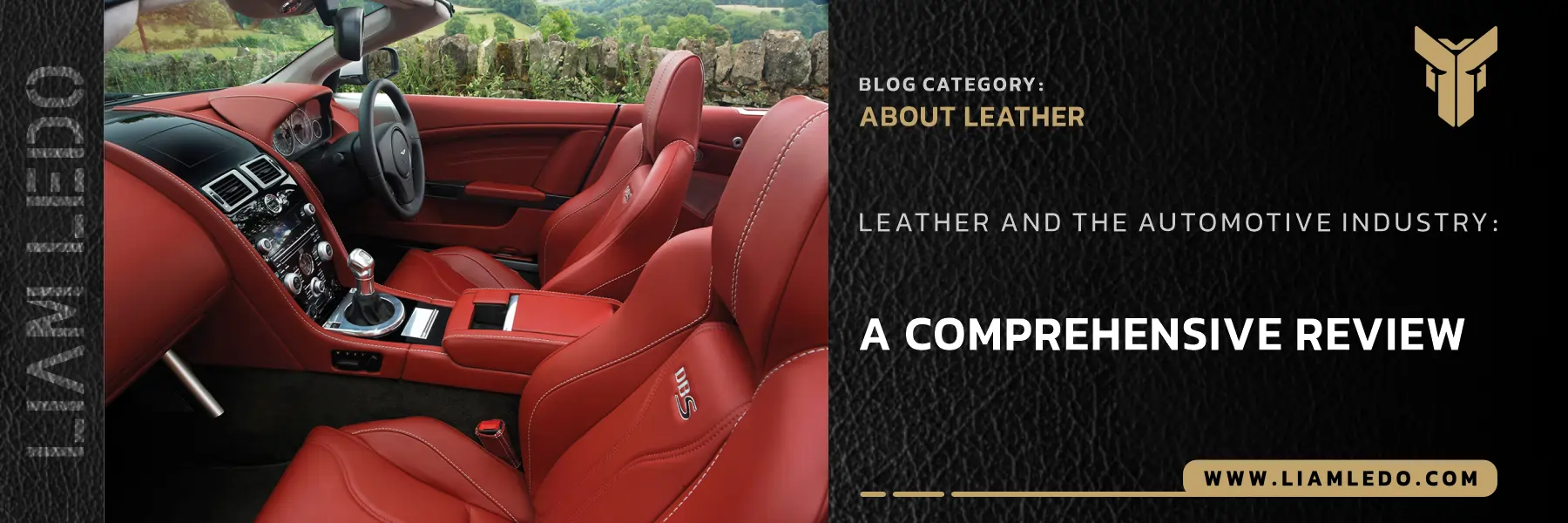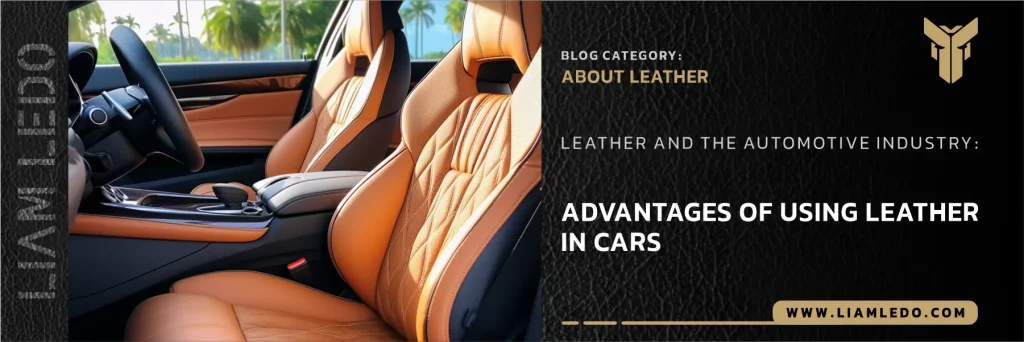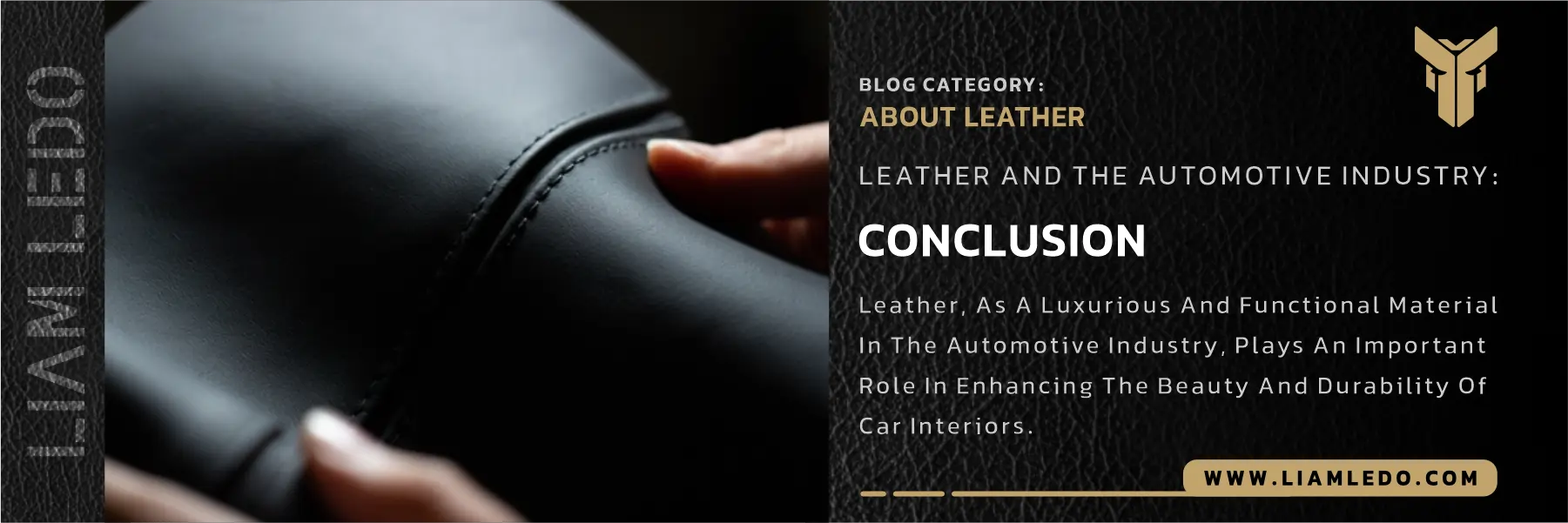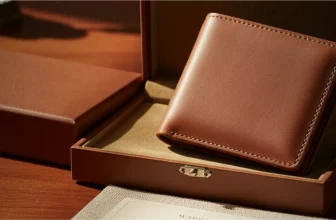
Leather has long been associated with luxury, comfort, and durability. In the automotive industry, it is one of the most sought-after materials for enhancing the look and feel of a car’s interior. From luxury leather car seats to decorative trims and accessories, leather plays a major role in defining the character of a vehicle. This article explores the history, advantages, disadvantages, and future trends of automotive leather interiors, as well as the growing popularity of synthetic and eco-friendly alternatives. By understanding these aspects, drivers and car enthusiasts can make better choices that balance style, comfort, and sustainability.
Learn more about leather and make better choices:
1.History of Leather in the Automotive Industry:
The story of leather in cars dates back to the early 20th century. During the 1910s and 1920s, car manufacturers began installing leather seats in their vehicles. At the time, luxury leather car seats were a sign of prestige, comfort, and sophistication, found mainly in high-end automobiles.
Over the decades, leather use expanded as new tanning and processing methods improved durability. Initially, only natural leather was used. However, with technological advancements, synthetic leather car interiors emerged, offering cost-effective and versatile options for a wider range of vehicles.
2.Advantages of Automotive Leather Interiors:
1.Comfort and Luxury:
Natural leather is known for its softness, breathability, and ability to adjust to body temperature. This makes it ideal for long drives, offering an unmatched seating experience. Additionally, the elegant appearance of automotive leather interiors adds a high-end touch to any vehicle.
2.Durability and Resistance:
One of leather’s most valuable qualities is its durability. High-quality leather is resistant to wear, tear, and stains. This is why many luxury brands prefer wear-resistant leather for car interiors, ensuring the cabin remains pristine for years.
3.Easy Maintenance:
Unlike cloth seats, easy to clean leather car seats can be wiped down quickly to remove dust, dirt, or spills. Specialized leather cleaners make upkeep simple, keeping the interior fresh and polished.

3.Disadvantages of Using Leather in Cars:
1.Higher Cost:
Natural leather production is expensive. From sourcing hides to the tanning process, the costs contribute to a higher price tag for vehicles equipped with luxury leather car seats. This is why leather interiors are more common in premium models.
2.Special Care Requirements:
While leather is durable, it requires maintenance to avoid cracking, fading, or losing its softness. Exposure to sunlight, extreme temperatures, or humidity can damage it over time.
3.Environmental Concerns:
Producing natural leather has a significant environmental footprint. Traditional tanning methods can pollute water and soil. As a result, demand for eco-friendly automotive leather is rising, prompting the industry to explore sustainable alternatives.
4.Synthetic and Alternative Leather Options:
1.Synthetic Leather Car Interiors:
Synthetic leather, often made from polyurethane (PU) or polyvinyl chloride (PVC), mimics the look and feel of natural leather while offering lower production costs. Synthetic leather car interiors are popular for their versatility in colors, textures, and patterns.
2.Plant-Based Leather:
Made from renewable resources such as plant fibers, plant-based leather for cars provides a sustainable option for manufacturers. These materials reduce reliance on animal hides and often involve more environmentally friendly production methods.
3.Recyclable Leather:
Recyclable leather automotive accessories are created from repurposed leather scraps or recycled materials. This approach reduces waste and supports circular economy practices in the automotive sector.
5.Future Trends in Automotive Leather Interiors:
1.Advanced Eco-Friendly Production:
Technological innovations like chrome-free tanning and bio-based coatings are reshaping the leather industry. These processes reduce environmental harm while maintaining the premium look of automotive leather interiors.
2.Customization and Design Innovation:
Car buyers increasingly seek personalization. Manufacturers now offer customizable leather interiors with different colors, stitching patterns, and textures—making each luxury leather car seat unique.
3.Shift Toward Sustainable Materials:
The push for eco-friendly automotive leather and plant-based leather for cars is expected to grow as environmental awareness increases. Brands are investing in research to create materials that are both stylish and sustainable.
4.Meeting Consumer Demand for Green Products:
Eco-conscious consumers are influencing the market. Automakers that offer sustainable leather production automotive solutions will likely gain a competitive edge.

Conclusion:
Leather will continue to be a key element in shaping the style and comfort of vehicles. While natural leather offers timeless elegance and unmatched durability, synthetic leather car interiors and plant-based leather for cars are gaining ground due to their lower environmental impact. The future of automotive leather interiors lies in balancing luxury, performance, and sustainability—ensuring that drivers enjoy the best of both worlds. Ultimately, innovation in materials and design will define how the next generation of cars integrates comfort with responsibility.
Source: The Gentleman’s Gazette | Wikipedia







